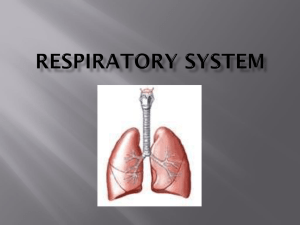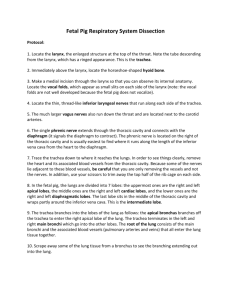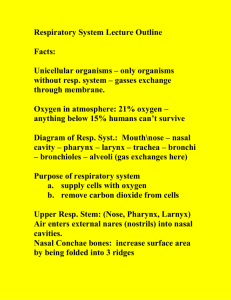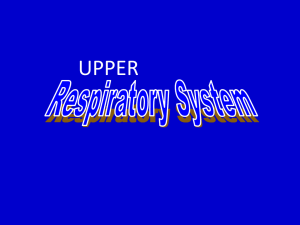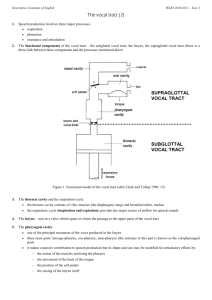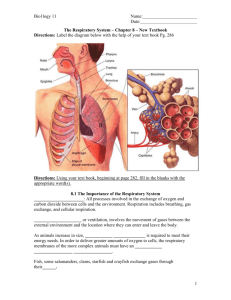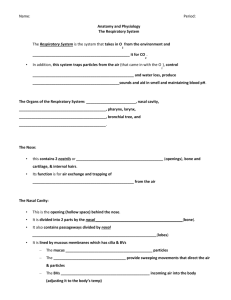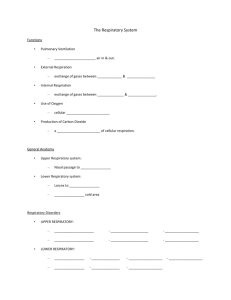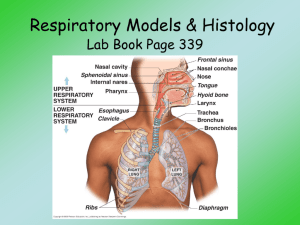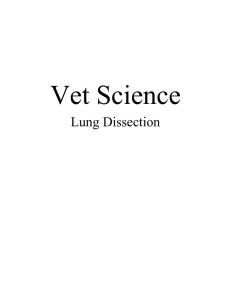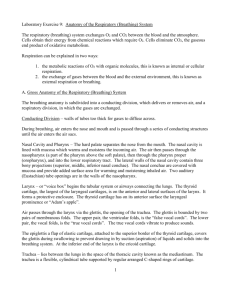Respiratory System Notes
advertisement
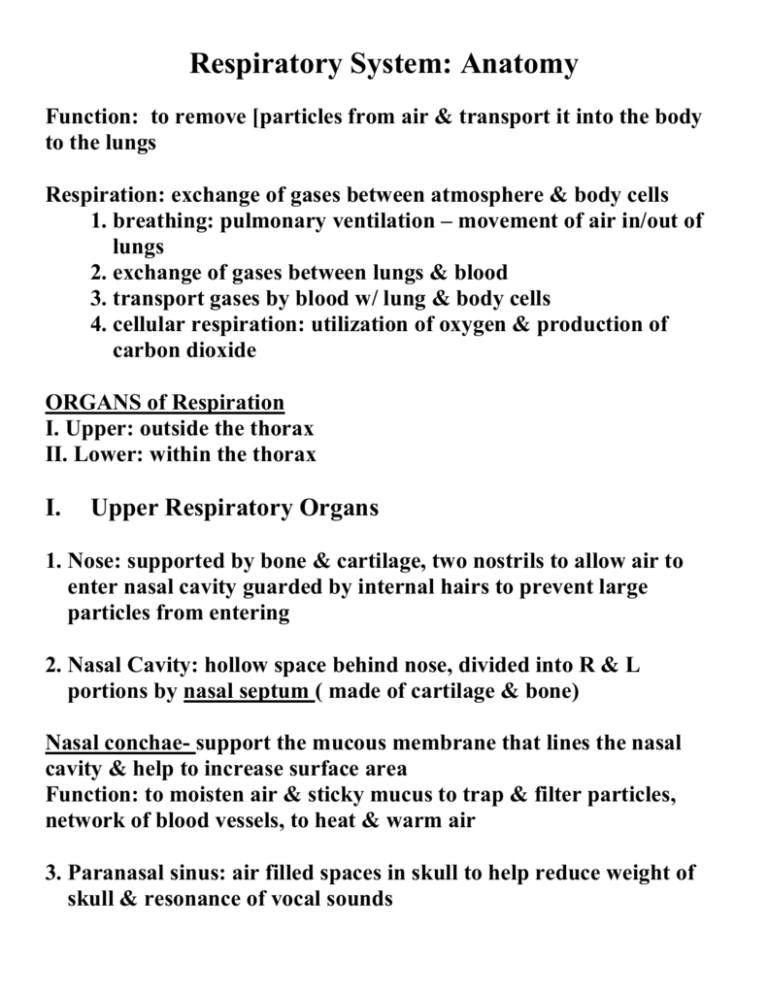
Respiratory System: Anatomy Function: to remove [particles from air & transport it into the body to the lungs Respiration: exchange of gases between atmosphere & body cells 1. breathing: pulmonary ventilation – movement of air in/out of lungs 2. exchange of gases between lungs & blood 3. transport gases by blood w/ lung & body cells 4. cellular respiration: utilization of oxygen & production of carbon dioxide ORGANS of Respiration I. Upper: outside the thorax II. Lower: within the thorax I. Upper Respiratory Organs 1. Nose: supported by bone & cartilage, two nostrils to allow air to enter nasal cavity guarded by internal hairs to prevent large particles from entering 2. Nasal Cavity: hollow space behind nose, divided into R & L portions by nasal septum ( made of cartilage & bone) Nasal conchae- support the mucous membrane that lines the nasal cavity & help to increase surface area Function: to moisten air & sticky mucus to trap & filter particles, network of blood vessels, to heat & warm air 3. Paranasal sinus: air filled spaces in skull to help reduce weight of skull & resonance of vocal sounds 4. Pharynx (throat) between nasal cavity & larynx. Functions: passageway for food into oral cavity to esophagus & air traveling between nasal cavity & larynx, also aids in producing sound for speech 5. Larynx (voice box) enlargement (Adam’s apple- thyroid cartilage) in airway at top of trachea below pharynx, elastic cartilage around epiglottis to be flexible Functions: move air in/out of trachea, prevent foreign objects in trachea (switching mechanism: allows food =esophagus air=trachea), houses vocal cords (2 pairs) a. false vocal cords: upper fold, no function in sound production, close airway during swallowing b. true vocal cords: folds to make vocal sounds, air forced between cords causing vibrations quality of sound based on shape of larynx, pharynx & oral cavity, pitch (muscle tone)change in the tension of vocal cords, intensity (loudness) forces of the air thru v.c. Glottis-opening between vocal cords Epiglottis- air enters larynx, during swallowing larynx raised, epiglottis closed prevent food into air passageway II. Lower Respiratory Organs 6.Trachea (windpipe) flexible tube, 12.5 cm into thoracic cavity, front of esophagus, splits into R/L bronchi Lined w/ ciliated mucus membrane to help remove particles 20 ‘C’ (open ring) shaped hyaline cartilage pieces, to prevent trachea from collapsing & blocking airway, soft tissue in back of ‘C’ expands as food passed thru esophagus 7. Bronchial Tree: branches from trachea to air sacs A. primary bronchi- R/L from trachea at 5th thoracic vert. 8. Bronchioles- finer, smaller tubes, no cartilage, increased smooth muscle Both serve as air passages, help remove particles 10. Alveolar ducts- thin tubes B. Alveoli- lg surface area, capillary/cell net, exchange gas 9. Lungs: cone shaped organs in thoracic cavity, separated by heart & mediastinum, occupies most of thoracic space, suspended by bronchi a. visceral pleura-attached to surface of lung b. parietal pleura- lines inner wall of thoracic cavity c. pleural cavity-space between the 2, lubricates to reduce friction during breathing right lung larger- 3 lobes, left lung –2 lobes each lung includes air passages, alveoli, blood vessels, lymphatic tissue & nerves

